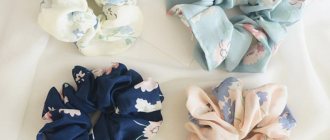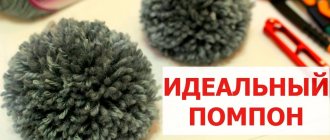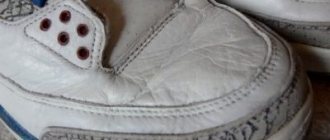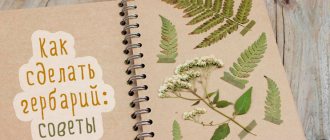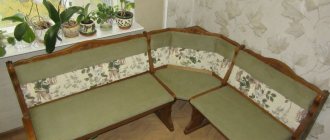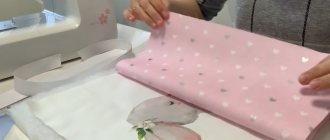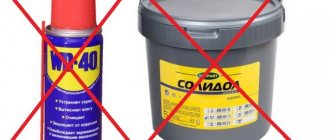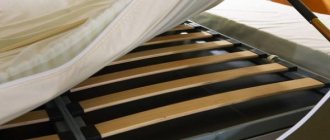- May 4, 2020
- Crafts
- Elena Kerra
The Herbarium is a wonderful book that allows you to take a journey into the world of plants growing not only in your native country, but also far beyond its borders. Some people think that in our age, dried samples of flowers and herbs have lost their relevance, because now everything can be photographed. However, it is not. Not a single photo can compare with a natural sample (even a dried one).
Students are often asked to make a herbarium from leaves and flowers with their own hands at school. Kindergarten students are also sometimes asked to bring such crafts. Not only children, but also many adults enjoy collecting beautiful leaves and blades of grass, because they make unique decorative elements.
How to make a herbarium from leaves and flowers? How to properly prepare material? What crafts can be made from dry leaves? In the article you will find answers to these questions.
Interesting facts about the herbarium
This term was first used by the French botanist Joseph Tournefort back in 1700. The word is derived from the Latin herba, which means “grass”. However, it was not he who invented the herbarium, but the Italian doctor Luca Ghini (founder of the botanical garden in Pisa), who was the first to come up with the idea of drying and attaching parts of plants to paper sheets with their description. This happened in the 16th century. Carl Linnaeus developed rules regarding the design of a herbarium. They are still relevant today. In Russia, the first herbarium sheet was made by Peter I. Our great sovereign wrote on it “torn in 1717.”
Those who believe that collections of dried plants are now of no use to anyone are mistaken. Even in the 21st century, a herbarium is necessary for specialists involved in the study of flora. Their collections are constantly updated. The largest herbarium is located in Paris (at the National Museum of Natural History). It has 8 million sheets!
But not only scientists need herbariums. They help children learn about the world around them and introduce them to the nature of their native land.
Types of herbariums
They are determined depending on the purpose for which the collection is created. The main classification is as follows:
- Morphological herbarium. Here, all parts of the plant are taken for samples, including rhizomes, leaves, stems, flowers, and seeds. This is exactly the kind of herbarium that scientists work with. In addition, the collection can use plants of a certain species at different stages of development - seedling, flowering, wilting.
- Thematic. Plants of the same category are selected for the herbarium - cereals, medicinals, and so on.
- Systematic. These collections are needed by specialists and school students. A herbarium is created on the basis of plants, systematized by class, family, genus or species.
- Periodic. Plants are selected in the collection according to the time of their collection (spring, autumn, summer).
- Special. Students are most often asked to make such a herbarium at school in order to study in more detail any type of plant, for example, fruit plants.
- Floral. The collection of samples is selected taking into account the growing area or collection of natural material.
Of course, it is not always necessary to adhere to this classification. For example, if you want to use a herbarium in the interior, you can select the plants that you like best, regardless of the time they were collected or their genus, class, or species.
How to collect material
We noted above that these rules were invented by Carl Linnaeus about 300 years ago. However, scientists still adhere to them. Here are the main points:
- The material must be dry. Therefore, you need to collect plants only in sunny weather.
- You can take any leaves and flowers. The main thing is that they are without visible defects.
- Each sample should be immediately (in the field) carefully straightened and placed in a separate “shirt”. This is the name of a sheet of newspaper folded in half. Also in the “shirt” you should definitely place a label on which to write the name of the plant, the place of its collection, the name of the harvester, and the date. If the herbarium is created for scientific purposes, then other data may be indicated on the label. If you are making a collection for a kindergarten, you can limit yourself to the name of the plant and the collection location (park, forest, garden).
- The material must be dried on the day it is harvested. Plants should not be left unattended for several days. During this time they may deteriorate.
- When decorating a herbarium, specimens should be sewn to a landscape sheet with thread or glued. It is not recommended to use tape.
- It is imperative to cover the album sheet with the sample with tracing paper. Nowadays it is allowed to place dried plants in files. They need to be filed in a folder.
Natural drying
It is very popular among summer residents and owners of country houses with their own plots. Plants can not only be hung by their stems, but also simply laid out. It is best to lay the future herbarium on rice napkins, blotting paper or cardboard. It is not recommended to cover plants. You should not place flowers under the scorching sun. It is enough to choose a non-humid place where enough natural light penetrates. The natural drying process takes from two to three weeks and allows you to harvest many flowers at once.
How to dry prepared material
There are several methods that allow you to obtain plant samples while preserving their original appearance as much as possible. This:
- Between sheets of paper under pressure.
- Using an iron.
- In bulk materials.
- Naturally.
Methods 1 and 2 produce flat samples. When dried in sand or naturally, the plants become voluminous. For a herbarium (but more for beautiful crafts), leaves or flowers can be soaked in a solution prepared from glycerin (0.5 l), water (2 l) and 3-5 drops of detergent. Natural material should remain in this preparation for 4-5 days. After this treatment, the leaves become voluminous and plastic. Their natural color becomes more saturated. Let's look at methods for drying samples in more detail.
Selecting a dehumidifier
There are several popular desiccants - substances that quickly absorb moisture. Each has its own characteristics:
- Borax, corn and white flour . They are characterized by low cost. The duration of drying in desiccant is 8-18 days.
- Semolina . More suitable for small and medium flowers. Large petals may fall apart. The medium-sized inflorescences are perfectly preserved and keep their shape.
- Silica gel . Allows you to dry small colors in 2-4, and large ones in 6-7 days. It can be used repeatedly. The downside is the cost. For five liters you will have to pay 150-300 rubles. Before use, be sure to bake in the oven at 100 degrees for about 2-3 hours.
- Salt . Absorbs moisture well and has a low cost. It is often used to dry the herbarium, but you will have to wait about a month until the flowers dry. It is best to use fine salt, which can penetrate deeply into the petals.
If speed of drying of the herbarium is of paramount importance, it is best to use silica gel.
Under pressure
Professionals dry the plants using a special botanical press. It consists of two wooden frames. A metal mesh is stretched over them. The frames are held together with straps or screws. A jacketed sample is placed between the grids. The belts are getting tighter every day. The “shirt” needs to be changed regularly.
How to make a herbarium from leaves at home? Instead of frames, you can take a thick book. You should do the following:
- Gently straighten the leaf and place it between the napkins.
- Place this design in a book.
- Put some weight on it.
Napkins are needed in order not to stain the pages with the juice secreted by the plant. This method allows you to obtain a sample in approximately 3 weeks. To speed up the process, you need to change the napkins daily. Then the sample will be ready in 10 days.
Using an iron
This electrical device is also often used to create a herbarium from leaves. Children will not be able to dry the samples with an iron with their own hands. Therefore, their parents should help them. You need to do the following:
- Lay out newspapers on the table. You cannot put a blanket under them, as the surface must be hard.
- Place a paper towel on the newspaper. You can also use a napkin.
- Place a plant leaf on a towel, straightening out all its parts. Cover it with a napkin and iron it with an iron. You need to keep the device on the sample for approximately 15 seconds. After this, you should replace the napkin and repeat the procedure.
If you use an iron, you need to make sure there is no water in it.
Bouquet of flowers from autumn leaves
You will need: leaves with stems, thick threads, tree sticks.
Master Class
- Fold a maple leaf in half so that the shiny side is on the outside.
- Twist a tight tube and start the process from the side.
- Take the second sheet and repeat step No. 1.
- Wrap the resulting tube in a second sheet.
- Make a rose bud of the desired size.
- Secure the base of the bud with thick threads.
- Make the required number of roses.
- Attach the buds to tree sticks.
- Form a bouquet.
A bouquet of roses from autumn leaves is ready! I recommend watching the video master class!
Bouquet of leaves. Autumn Bouquet of Roses from maple leaves.
Watch this video on YouTube
In bulk materials
You need to dry the samples in sand or silica gel (you can take it from the bags that are placed in boxes with shoes). An autumn herbarium made up of plants that have retained their volume turns out to be more beautiful. In this way, you can prepare leaves and flowers without changing their natural shape.
Sand is most often used. It must first be washed and calcined in the oven. Sand must be stored in a closed container so that it does not absorb moisture from the environment. For drying plants, a special device is made - a pound. It is a paper cone with a lid. Algorithm of actions:
- A sample is placed in the pound. If it is a flower, it should be placed with the bud down.
- Using a spoon, carefully fill the pound with dry sand.
- The device is installed vertically on a stand with the top of the cone down.
- The top of the pound is covered with a lid so that the sand does not absorb moisture from the air.
- In about 10 days the sample will be ready. The sand is removed. To do this, make 2-3 holes at the top of the cone with a needle. The sand spills out, but the sample remains intact.
river sand
It perfectly absorbs excess moisture and dries, but has one drawback. It lies in the fact that drying takes from two to three weeks. In addition, sand cannot be used immediately. It is first sifted and calcined over fire. The advantage is the availability of the material and the absence of the need to pay for the substance. For containers, it is best to take a container with an opening bottom. This allows you to quickly get rid of sand. If zinnias, calendula, and gerberas are dried, the flowers are placed face down. The rest, on the contrary, are placed in inflorescences on top. Otherwise, there is no difference between the previous method.
Collection design
Above we indicated what types of herbariums exist. According to the classification, select the leaves. For example, let's say you create a collection of fruit trees. You will need apple, pear, plum, cherry leaves and so on. To make the dried material more dense, keep it for about half an hour in a solution of PVA glue and water (1:1 ratio). Next, follow these steps:
- Take a herbarium album. It can be purchased at an office supply store. If you do it yourself, then place tracing paper between the landscape sheets. You can simply glue it along the top edge of each page.
- Place the sample on a landscape sheet. If you follow the rules, it needs to be sewn, but you can just glue it. There should be one plant on each page. If the sheet is too large, it can be cut into pieces.
- Write a description of the plant. If you have a photo, you can paste it next to the sample.
Fill out the entire album in the same way. If you create a herbarium of leaves for children with your own hands, you can create small compositions. Then it will be more interesting for the kids to do this activity. Come up with a plot for each sample.
For example, you can draw a vase and attach leaves as if they were in it. Another option is a hedgehog carrying samples you collected on its needles.
Tools for collecting plants
To collect a variety of materials you will need:
- Plastic bags;
- Roulette;
- Secateurs;
- Labels/notes;
- Pens/pencils;
- Camera.
For coloring:
- RHS color chart.
For pressing:
- Two pieces of cardboard measuring approximately 40 x 30 cm;
- Sheets of blotting paper;
- Corrugated cardboard sheets;
- Flimsy paper or thin tracing paper;
- Bricks / telephone directories / weighty books / belts.
For installation:
- Acid-free paper size 42 x 26.5 cm / A3;
- Labels, preferably acid-free;
- Tweezers;
- Water-soluble glue;
- Scissors;
- Neutral pH PVA glue;
- pH Neutral Adhesive Bandage Adhesive Linen Hanging Tape.
For storage
- Plastic bags;
- Freezer;
- Boxes.
Herbarium on one sheet
Most often this option is used for kindergarten. The children place dried samples of plants (for example, growing in a park) on one album sheet, and adults sign them.
This design of a herbarium made from leaves is also quite often used as a decorative element. The photo below clearly demonstrates what the decoration looks like in the interior of the room. The sample sheet should be placed in a beautiful frame under glass. Plants can be selected at your discretion. There are no restrictions here. The main thing is that they create a harmonious composition.
Some designers take several large leaves of the same plant, but in different colors (green, starting to turn yellow, completely yellow). Place each in a separate frame. From these elements the composition “Seasons” or “Mood” is created. Maple leaves are great for this purpose, as they have a beautiful shape. But you can take other plants.
DIY crafts
The herbarium can also be used to make beautiful decorative elements (usually dry leaves are taken). Children enjoy making appliqués. There are a lot of ideas for creativity.
To make a cute tree you will need:
- dry leaves;
- gouache (you can also use watercolors);
- glue;
- pencil.
Work order:
- On a landscape sheet, draw the outlines of the tree.
- Paint the trunk with brown gouache. Draw a face on it.
- Make the crown from dry leaves (just glue them in the right place). They can be arranged randomly.
- To create an autumn landscape, stick on several leaves as if they were plucked from the branches and carried through the air by the wind.
You can make the craft a little more complicated. To do this, draw a hedgehog under the tree. Instead of needles, glue brown leaves. You can make a hedgehog, as well as other animals from colored paper. Place a red squirrel on a branch and glue some mushrooms under the tree.
When creating applications, you can do without paints. In this case, all parts of the body of animals, birds, and fish are made only from dry leaves. They should be placed on paper so that the intended image is obtained. You can use not only leaves, but also plant seeds. If the shape of a leaf is not quite suitable for the craft, you can correct it a little with scissors. You need to work carefully, as dried natural material is very fragile. Any careless movement causes it to break and crumble.
Volumetric compositions
What other crafts can you make from leaves? A herbarium framed under glass is an effective decorative element. But dry leaves are great for creating other original compositions. The most popular is the panel.
You can do it with your children. To make an autumn panel, you will need:
- sheet of plywood or thick cardboard;
- glue;
- leaves;
- acrylic paints;
- brush.
Follow these steps:
- Cut a rectangle from plywood or cardboard. Choose its sizes yourself.
- If you used plywood, sand the edges with sandpaper.
- Make the background of the future panel. To do this, cover the rectangle with paint of the desired color. Wait until it dries.
- Glue bright leaves onto the rectangle. Arrange them randomly, creating an abstract picture. You can decorate the panel with rowan berries or dry ears.
If you don't like abstraction, create more realistic images. For example, you can draw a girl’s face and glue beautiful leaves instead of hair. There are a great many ideas for panels.
Dry leaves make luxurious autumn wreaths. As a base, the easiest way is to take a donut-shaped figure cut out of thick cardboard. You need to glue bright leaves to it. Add berries, dried flowers, and ears of corn to the wreath. It will turn out incredibly beautiful.
Tips and secrets
- Remember: the “younger” the flowers or inflorescences (1-2 days), the more stable their color. Taken at the end of flowering, they, as a rule, disintegrate when dried, lose their petals, and the color becomes dull.
- If plants are collected away from home, they are immediately placed in a book or newspaper. If you did not have time to process and lay the flowers for drying, then put them in water and start drying them the next day.
- If some flowers had to be picked after the rain, they are placed in water and allowed to dry, and then dried.
- You can collect wilted flowers: dried, they give a graphic and picturesque composition.
- Petals, leaves, stems are dried separately. You cannot put tender and rough parts of plants together, since they require different loads: for tender ones - 8–16 kg, for rough ones – 20–40 kg or more.
- For lush flowers such as aster, dahlia, peony, rose, the stems and leaves are dried separately. All green parts are removed from the flower heads, except those directly holding the petals. Using medical tweezers, lift the petals row by row and place thin layers of cotton wool between them. The processed flower (or 3-4) is placed in a bookmark under a press. Some of the petals are placed and dried separately under a load of 5–10 kg.
- Peonies are cut (torn) into 4–8 parts, lined with cotton wool and dried. In the future, whole flowers can be easily and quickly assembled from such parts.
- When drying autumn dahlias, you need to take the most blooming specimens. The middle of the flower is removed and filled with cotton wool, the petals are raised in rows, laid with a thin layer of cotton wool and the entire flower from the front and back is covered with cotton wool.
- Tulips can be dried individual petals (removing the middle), and then mount the flower. If you dry a whole tulip flower, then you need to let it wither.
- Chamomiles, gerberas, annual dahlias, marigolds and other similar flowers are placed on newspaper with the stem up, the petals around the stem are completely covered with a cotton wool roller, dried in bookmarks with several pads under a load of at least 15 kg. Delicate white and pink petals are especially difficult to dry. They are placed in a white bookmark or paper napkins without a pattern and often change newspapers, which act as pads.
- Small flowers, necessary for creating miniatures and landscapes, are dried entirely. Forget-me-nots, buttercups, hemlocks, yarrow, blooming rowan, jasmine and bird cherry flowers are placed in a newspaper bookmark along with a twig, covered with newspaper pads, cardboard (plywood) and dried under a press of at least 15–20 kg.
- Roses are also dried individually or as a whole - well-withered.
- Don't throw away wilted bouquets! Some of them can be taken for future panels.
- In summer and autumn, try to stock up on a variety of seeds, fruits, poplar fluff, cotton grass fluff, fireweed, coltsfoot, dandelion, and thistle. This is an amazing "white paint".
- Be sure to dry bright autumn leaves. Before putting them to dry, clean them from dust and dirt with wet cotton wool or a soft cloth. The leaves of silver poplar, autumn raspberry, coltsfoot, Norway maple, and elecampane have a white, gray, gray-bluish color on the underside. Common maple leaves come in different colors and shades, which makes it possible to create beautiful backgrounds for compositions.
- In order for succulent stems (tulip, narcissus, dicentra) to retain their color, before storing them in the herbarium, they must be cut lengthwise with a razor blade or a sharp knife and the core scraped out. Thick or woody stems (onion, carnation, gerbera, rose) are simply divided in half.
- It is good to dry dense, leathery, juicy, and bright autumn leaves by ironing them with a hot iron through paper. Flowers are not dried with an iron. The exception is cornflower, which can be dried with an iron.
